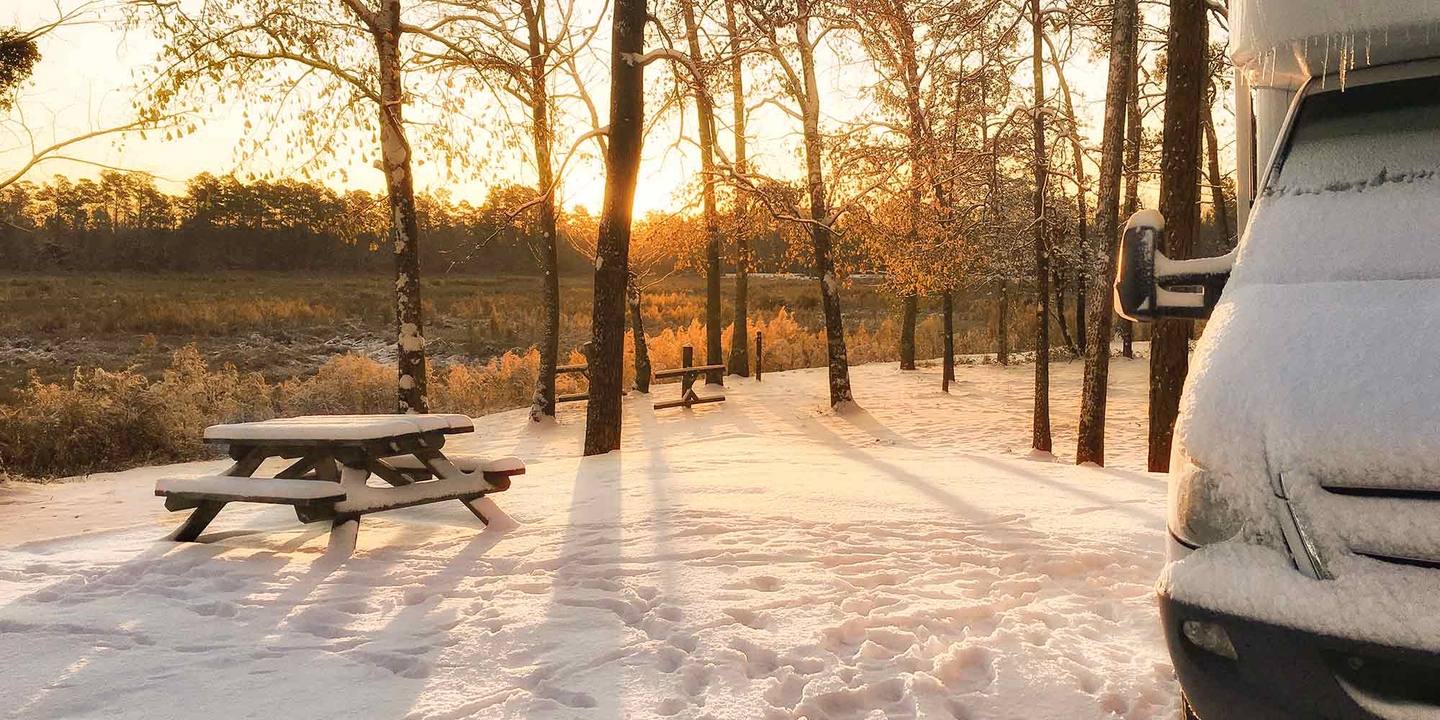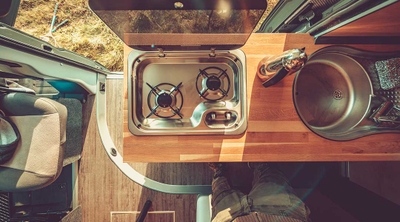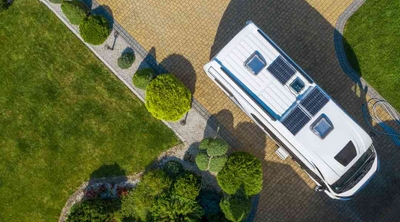How to winterize an RV
2 min read
Winterizing and storing an RV for the season is not always fun. Following the steps of a RV winterizing checklist is a must if you want your rig to function at its best when it’s time for the fun to begin again. Opening your RV in the spring to discover damage caused by frozen water can end up costing you hundreds, if not thousands, of dollars. Following these basic steps to winterize a travel trailer or motorhome can keep water from seriously damaging your rig.
Steps to winterize an RV
Use our RV winterizing checklist to help winterize your motorhome or travel trailer.
1. Remove hookups and drain your RV
If you have connected your RV to water at home or a campground, unplug it and turn your water heater off. Next, drain all your RV’s low-point drains, which should be easily visible (and easily reachable) underneath your rig. Look for stickers that say “low-point drain” right above them. Consult your owner’s manual if you need help finding them.
Now drain the water heater. Its placement varies depending on the model, so poke around under your couches or consult your owner’s manual to find its exact location.
2. Blow out your water lines
Head outside and blow out your water lines using an air compressor and blow-out plug. That allows you to connect the compressor directly to your water intake. Head back inside and bypass your water heater so you don’t dump gallons of unneeded antifreeze into it. You’ll need one if your RV does not have a bypass kit. These are affordable and available online or at your local camping or hardware store.
3. Add antifreeze from outside water intake
Add antifreeze by the gallon from the outside water intake using a hand pump. Go inside and check each faucet separately to ensure it’s filling the system. Start high and work low. Check the kitchen sink first, then the bathroom sink, shower, and toilet. If you have extra accessories that use water, now is the time to ensure the water is emptied from them, too. That includes outside showers, ice makers, washing machines, and macerating systems.
4. Add antifreeze to drains
As a final step pour antifreeze into your sink and shower drains.
Additional ways to winterize your RV
Now that you’ve prepared your RV for winter storage, it’s time to say goodbye until next season. Take a few additional steps to winterize your RV including:
- Vacuum storage bins to remove crumbs and to keep mice out of your RV.
- Check all outside seals and caulk to manage humidity in your RV.
- Clean out sewer hoses and store them for the winter.
- Use wheel chocks and make sure your rig is stabilized.
- Keep your RV out of direct sunlight and consider buying a protective cover.
- Clean the awning using a cleaner specifically designed for the fabric.
Learn how to protect your RV with an RV insurance policy and RV insurance coverages.






